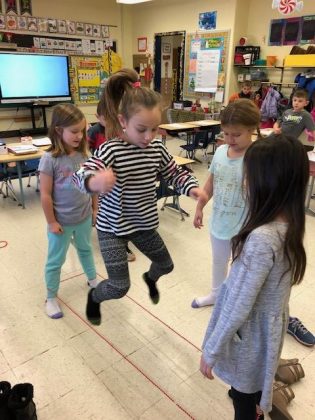Active Outdoor Recess
Elementary schools should incorporate a minimum of 20 minutes per day of recess for all grades and 30 minutes for primary grades. The benefits of recess also extend to secondary grades, too!
Read More
Are your students restless from being cooped up inside due to rain or cold? Active indoor recess is a great way to get physically moving, regardless of space or equipment constraints. Support students in getting the recommended 60 minutes of physical activity per day by implementing a fun and engaging indoor recess program.
Recess is social in nature and gives children open-ended free time where they can use their imaginations and engage in meaningful ways with friends through unstructured play. Children develop skills in communication, conflict resolution and teamwork through games and activities while putting the wiggles to good use to help reset and refocus.
Try some of these strategies to get your students moving during indoor recess:
Get student input – What would they like to do during indoor recess? Active indoor recess provides opportunities for children to come up with their own ideas on how to get active and better manage feelings and emotions. Student autonomy supports the development of self-confidence and fosters creativity. Perhaps host a student and staff survey to gain insight and integrate trending activities and games.
Don’t be afraid to leave activities open-ended. Unstructured play is critical to a child’s development and can be explored in many ways. Bins and recess carts filled with manipulatives, resources, and other materials are a great way to provide direction but allow students to determine what and how they use them.
Establish indoor recess structures and routines and practice them consistently to ensure students are safe and not disturbing other classes.
Provide ongoing support and learning opportunities for teachers to find new, safe and age-appropriate ways to keep students active while indoors.
Coordinate with your school’s physical education teacher to offer games and other activities safe for a classroom setting.
Partner with a local fitness instructor or a caregiver with a fitness or wellness background to host fitness, mindfulness, or dance classes during recess.
Invite parents and caregivers to compile indoor recess carts or bags for student use throughout the year.
Connect with a local college or university to have student volunteers lead activities during recess – these volunteers serve as great role models, too.
For more activities and ideas like this one, be sure to sign up for our news and updates. And if you like what you see, please donate to support our work creating more ways to help build a healthier future for kids.
Categories: Physical Activity & Play, Social-Emotional Health, At School, Digital Resource